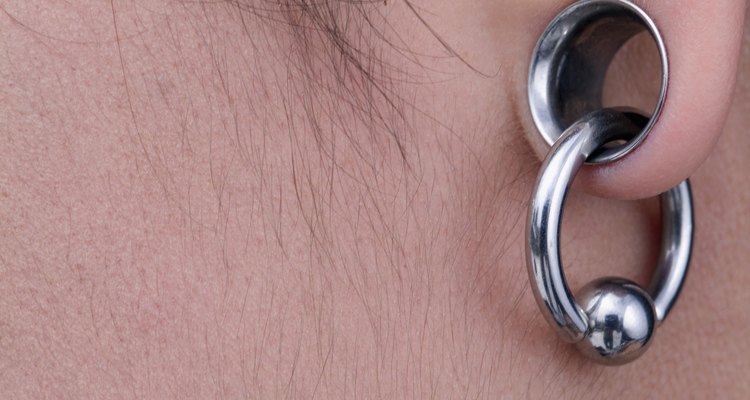
Medioimages/Photodisc/Photodisc/Getty Images
Earlobes and other piercings can be gradually stretched to accommodate thicker jewelry. The word "gauge" refers to the thickness of the jewelry, measured by diameter. The smaller the number is, the larger the gauge is; for example, an 18 gauge is smaller than a 2 gauge. The most common problems with earlobe stretching result from stretching the lobe too quickly.
Stretching Procedure
For those who want to stretch to a large gauge, a professional piercer can pierce the ears at a large gauge. Depending on the size of the lobe and the experience of the piercer, initial piercings up to a 6 gauge are possible. Most people start with small holes and stretch with tapers, which look like thick piercing needles with a small, blunt end and a large end. After reaching a 000 gauge, many people begin stretching with Teflon tape, wrapping one revolution of tape around their plugs every week.
Aftercare
Because stretching causes microscopic tears in tissue, the aftercare for newly stretched piercings is the same as for new piercings. The Association of Professional Piercers recommends soaking piercings for 10 minutes each day with a saline solution made of 1 cup warm bottled water and 1/4 tseaspoon noniodized sea salt. After soaking, piercings should be washed with an antimicrobial soap such as Technicare, Satin or Provon. It is possible to remove plugs long enough to wash and reinsert them without the piercing shrinking.
Blowout
The most common problem with stretching is blowout. The inside of a stretched piercing is called a fistula, which is a tube of scar tissue. If you stretch a piercing too quickly, it forces the fistula through the back of the ear, causing a lip of skin around the jewelry. Blowout can sometimes be reversed by inserting jewelry from the back. If blowout is severe, it requires cutting off the blown-out skin and suturing the stretched lobe, which significantly reduces the size of the hole.
Foul Odor
Dead skin, sebum and soap or styling products can build up inside the fistula, causing a foul odor. It is important to wash your lobes and jewelry daily to prevent odor and maintain the health of the piercing. Jewelry materials most likely to generate a bad smell are metal and glass. Materials that tend not to smell are breathable organics, such as wood, horn and bone.
Infection
Piercing and stretching performed by a professional piercer usually heal quite well, provided you keep up diligently with the aftercare. However, because stretching causes small tears, infection is possible. The most common cause of infection is touching the piercing with dirty hands. Some redness, swelling and tenderness after a stretch are normal, but if your earlobe is hot to the touch or oozing green or yellow pus, you could have an infection. If you experience fever or chills, call your physician or go to the emergency room immediately, as this could be a sign of a serious staph infection called MRSA.
Related Articles

How to Gauge the Ears Right After the ...

How Long Before a Nose Ring Hole Closes?
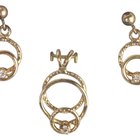
How Long After Piercing Can You Change ...

How Long After Piercing Can You Wear ...

What Is Bio-Flex Made of for Piercings?
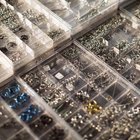
Complications of Nipple Piercing

How to Stretch Ears With Tape

How to Put in Double Flare Ear Plugs

How to Gauge Your Ears Without Tapers

How to Pierce Your Navel
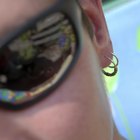
Places to Pierce Your Ear

How to Open Pierced Ears That Have ...

How Long to Wait Before You Change a ...

How to Use Weights to Gauge Ears
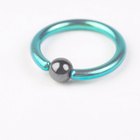
How to Clean Your New (Conch) Ear ...

How to Repair Ear Gauges

Male Nipple Piercing Information
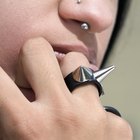
Information on Nose Piercings

How to Stretch Your Lip Piercing

Taking Care of Gauged Ears
Writer Bio
Ann Jones has been writing since 1998. Her short stories have been published in several anthologies. Her journalistic work can be found in major magazines and newspapers. She has a Master of Fine Arts in creative writing.
Photo Credits
Medioimages/Photodisc/Photodisc/Getty Images